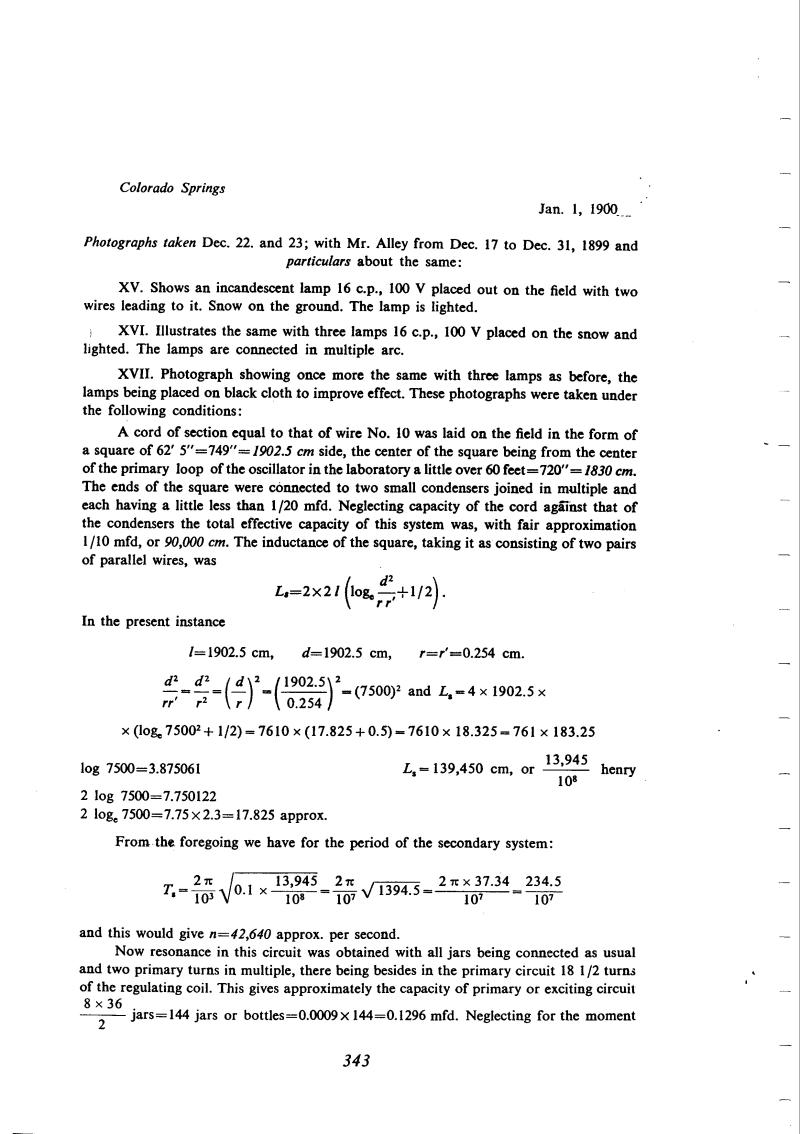
Nikola Tesla Books
XVII. Photograph showing once more the same with three lamps as before, the lamps being placed on black cloth to improve effect. These photographs were taken under the following conditions:
A cord of section equal to that of wire No. 10 was laid on the field in the form of a square of 62' 5" = 749" = 1902.5 cm side, the center of the square being from the center of the primary loop of the oscillator in the laboratory a little over 60 feet = 720" = 1830 cm. The ends of the square were connected to two small condensers joined in multiple and each having a little less than 1/20 mfd.
| log 7500 = 3.875061 | Ls = 139,450 cm, or $! {13,945 \over 10^{8}} $! henry |
January 1
On photograph XVII, bulbs are shown connected to the resonant circuit made of one turn rectangular in shape. According to data mentioned the square edge is 1.3 meters away from the oscillator secondary coil. The capacitance of the oscillating circuit consists of two capacitors connected in parallel. The bulbs are connected in parallel. The square turn inductance Tesla calculated according to an equation for two parallel conductors' inductance as those are two parallel conductors pairs connected in series. When the calculation is done as per equation for a square coil (Fleming, p. 155):
L = 81 (ln $! {d \over r} $! - 0.774)
The value obtained is 12.6% smaller than the one found in the notes. The calculated value of a square coil circuit resonant frequency is due to that somewhat higher, and therefore the inductance of the oscillator primary coil calculated as Tesla does it is even smaller. In fact, due to the existence of a very good coupled secondary the oscillator has complicated the oscillating spectrum with probably the strongest component in the frequency of the oscillating circuit with a square coil.
Related to four secondary coil photographs with extensive discharge the remark about energy transmission over a distance is interesting.
Tesla concluded on the basis of comparisons with achieved induction apparatus that the signal registration could be performed at the distance of 1000 or more miles, even over the earth globe surface. There is no data in the notes about measurements over longer distances, and in article(41) written immediately after the finish of the work at Colorado Springs, he says that he observed the effects at a distance of approximately 600 miles.

